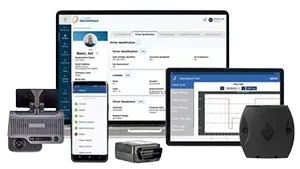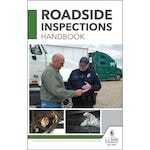
English Language Proficiency for CMV Drivers
The English language proficiency (ELP) requirement for drivers of commercial motor vehicles (CMV) is not new. What is new, is how the regulation is being enforced and when a driver with inadequate English language skills will be placed out of service. This issue is central to the CDL English requirement and the related Federal Motor Carrier Safety Administration (FMCSA) English requirement that all commercial drivers must meet.
The regulation is located in Part 391 of the FMCSA regulations. The regulation states:
- 49 CFR 391.11(b) Except as provided in subpart G of this part, a person is qualified to drive a motor vehicle if he/she—
- (2) Can read and speak the English language sufficiently to converse with the general public, to understand highway traffic signs and signals in the English language, to respond to official inquiries, and to make entries on reports and records
What You Need to Know
Officers are now to use a two-step process to evaluate the driver’s English skills under the updated DOT English requirements. First, the officer will conduct an interview built around official inquiries. Common questions asked during the interview can include:
- What are you hauling (what's your load?)?
- Where are you coming from and going to?
- Where is the shipment coming from and going to?
- When did you pick up this load?
- For whom are you driving (what is your carrier's name/employer's name, if two different entities who are they?)?
- When and where did you start your day today?
- When did you start this "tour" (how many days have you been out?)?
- Have you had any problems, such as breakdowns, bad weather, or other delays in the last week?
More questions may be asked and each of these questions can lead to additional questions.
The driver will be required to answer all questions in English. If the driver cannot adequately answer the officer’s questions due to poor English language skills, the driver is to be cited for a violation of §391.11(b)(2) and placed out of service.
If the driver’s English language skill is found to be adequate during the interview phase, the next step will be for the officer conducting a highway traffic road sign recognition assessment. This involves verifying that the driver can read and understand road signs that include English. If the driver cannot read and explain the signs the officer shows the driver, the driver is to be cited for a violation of §391.11(b)(2) and placed out of service.
Previously, if the driver could not present requested documents and materials and/or could not answer basic questions asked during a roadside inspection due to poor English skills, a violation of §391.11(b)(2) was written. However, the driver was not put out of service. This enforcement approach did not fully address concerns related to non-English speaking truck drivers.
To return to service, there are two choices:
- File a DataQs and successfully fight the violation, or
- Improve the driver's English skills
Either way, the driver is out of service until the violation is addressed. If the first option is used, the key will be proving the driver’s language skills were adequate at the time of the inspection. If a citation for the violation is dismissed by a judge, the court documentation can be used in the DataQs challenge. If the second option is used, having proof of English language training would be important if the driver receives another violation later on.
To avoid having drivers being cited and placed out of service under this new enforcement policy, carriers should:
- Conduct English proficiency checks on all new-hire drivers that have English as a second language. The check should include an interview and a basic reading and writing test. The interview and test should be based on industry and compliance topics (such as the regulations and road signs that use English).
- Conduct English proficiency checks on existing drivers that have English as a second language. The check should follow the same process as the one used with new-hire drivers.
A key to conducting this is to be impartial. If the driver must revert to another language or cannot come up with the correct English terms to answer industry- or compliance-related questions, the driver should not pass.
The solution to a driver not passing the English language check is to have the driver complete an English as a second language class. This should help the driver improve the English skills, and the certificate from such training can help defend the driver if a violation is written during a roadside inspection.
Finally, consider conducting mock roadside inspections with your drivers. This can help drivers overcome the nervousness that comes with a roadside inspection. Remaining calm and speaking slowly is important for a driver that does not speak English as a first language.
While there has been a lot of discussion about the new enforcement practices, what a carrier needs to do is fairly straightforward. Carriers need to verify that their drivers can speak English well enough to communicate with officers on the road and read English well enough to understand road signs that use English.








